Correct amount of carbohydrates an important management consideration
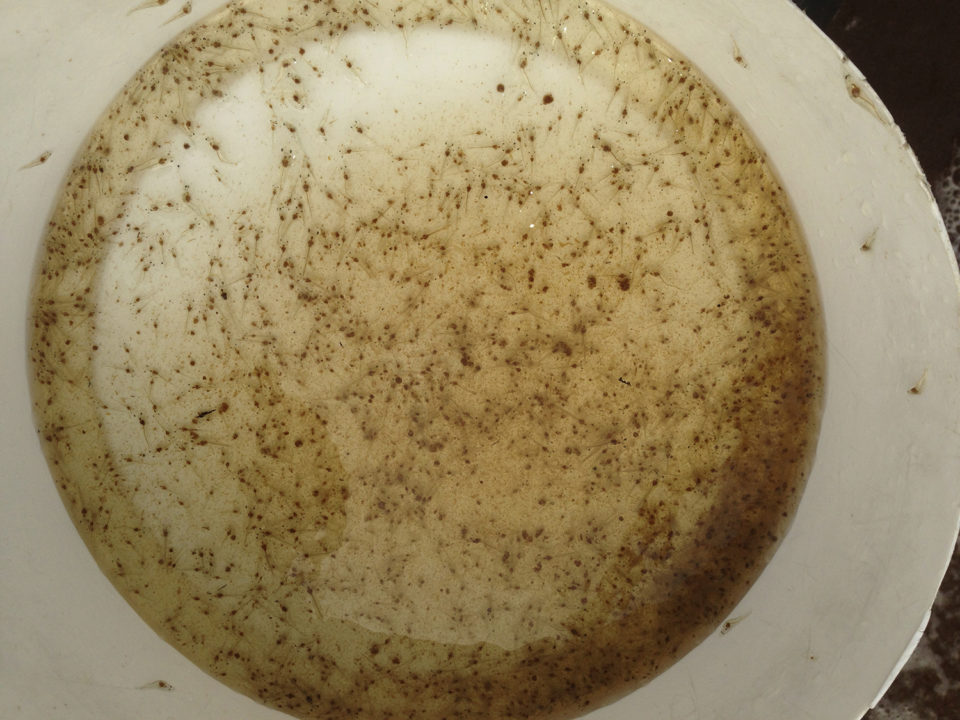
The ratio of carbon to nitrogen (C/N ratio) has been used to assess the status of soil organic matter and the usefulness of livestock manures and other organic matter sources as soil amendments and fertilizers in traditional agriculture for many decades. The C/N ratio also is an indicator of pond bottom soil fertility and organic fertilizer quality in aquaculture. More recently, the C/N ratio has provided a basis for improving development of bioflocs in biofloc aquaculture systems.
The C/N ratio of stable organic matter in terrestrial soils is usually around 10:1 to 12:1, and the ratio is about 6:1 to 12:1 in pond soils. Organic fertilizers have a higher C/N ratio with a range of at least 20:1 to 100:1. As organic matter decomposes, bacteria use organic matter as a source of energy in respiration and carbon dioxide is mineralized into the environment. This lessens the amount of organic carbon in the decomposing residue while nitrogen is retained with the residue in bacterial biomass. The result is a decrease in the C/N ratio as the residue decomposes.
The C/N ratio (on a dry weight basis) is around 5:1 for bacteria and about 10:1 for fungi. Microorganisms of decay have a high nitrogen content (10 percent in bacteria and 5 percent in fungi). Because microorganisms require a lot of nitrogen to produce new cells, they typically decompose organic residues with more nitrogen faster than they decompose with less nitrogen. Residues usually are high in carbon concentration (30-45 percent), but bacteria and fungi are 50 percent carbon. As carbon is lost through microbial respiration, a rather constant C/N ratio is reached in stable organic matter in which bacteria respiration is much slower than in fresh organic matter.
Texts on soil microbiology often indicate that bacteria convert about 5 to 10 percent of organic matter to new cells during decomposition while the conversion by fungi is 30 to 40 percent. A recent bulletin from a major U.S. university contains an example in which 100 grams or organic residue results in 3 to 8 grams of bacterial biomass, 60 to 80 grams of carbon dioxide, and 13 to 38 grams of residual organic matter that would continue to decompose slowly over several years. This suggests a conversion to new bacterial cells of 3.4 to 12.9 percent. Bacteria and other heterotrophic microorganisms have short live spans, and they contribute to the organic matter pool when they die. Microbial biomass has a low C/N ratio and decomposes easily.
Microbial growth efficiency
In fresh, easily decomposable organic matter, the amount of bacterial biomass formed per unit of organic matter decomposed is much greater than indicated in the paragraph above. A 2006 paper by J. Six and colleagues published in the Soil Science Society of America Journal reviewed several reports on microbial growth efficiency (MGE) – often called the carbon assimilation efficiency in older papers.
The MGE (grams of carbon in new microbial cells ¸ grams of metabolized carbon) ranged from 0.1 to 0.85 (average of 0.42) in laboratory studies, from 0.01 to 0.70 (average of 0.33) in aquatic environments, and 0.14 to 0.77 (average of 0.53) in terrestrial soils. The wide ranges in MGE can be attributed to differences in the nature of the organic matter being decomposed, i.e., its chemical complexity, nitrogen concentration, C/N ratio and environmental conditions. It also appears that MGE is less in aquatic than in terrestrial environments. The review further revealed that models of organic carbon dynamics used MGE values of 0.30 to 0.55.
One point is quite clear; because organic fertilizers added to aquaculture ponds have wide C/N ratios (usually 20 to 40 or above) they will decompose rather slowly, because of the lack of nitrogen. Chemical fertilizers containing nitrogen often are applied with organic fertilizers to provide a quick source of nitrogen to increase the rate of organic fertilizer decomposition and resulting mineralization of phosphorus to stimulate primary productivity.
In feed-based aquaculture, feeds have narrow C/N ratios of 7:1 to 10:1, the C/N of feces is no doubt wider than in the feed from which it was derived, but dead plankton C/N ratios are similar to those of feed. The organic matter added to and produced naturally in feed-based aquaculture ponds as well as that added to cages and other aquaculture systems decomposes much faster than organic fertilizers.
When organic residues with a narrow C/N ratio decompose, there is more nitrogen in them than bacteria can use for growth, and nitrogen is mineralized to the environment as ammonia. In other words, the more nitrogen in a residue, the more ammonia mineralized. Of course, if there is not enough nitrogen in the residue to satisfy immediate microbial requirements, decomposition will be slow. Microorganisms must die and their nitrogen be recycled for the residue to continue to decompose. In situations where ammonia and nitrate are plentiful in the environment, heterotrophic microbes can utilize these two forms of soluble, inorganic nitrogen while decomposing organic matter – a process called nitrogen immobilization. The application of urea with organic fertilizer mentioned earlier is intended to stimulate decomposition of high C/N organic fertilizers by facilitating nitrogen immobilization.
Biofloc aquaculture and carbohydrate inputs
Biofloc aquaculture is highly intensive and feeding rates may exceed 500 kg/ha per day. Microbial oxidation of uneaten feed, feces and metabolic excretion by culture animals supplies more ammonia nitrogen than can be used by phytoplankton and nitrifying bacteria. The planktonic community in an intensive production system shifts from phytoplankton dominance to dominance by heterotrophic microbes as feeding rate increases. Nevertheless, ammonia nitrogen accumulates in the water because the bacteria are decomposing residues with low C/N ratios, and the amount of biofloc may not be great.
Bioflocs are eaten by the culture species, and this can increase feed use efficiency by recycling waste nitrogen from feed into bioflocs. Ammonia control also results from immobilization of dissolved ammonia in bioflocs. Therefore, the development of bioflocs should be encouraged in management of biofloc systems. John Hargreaves discussed bioflocs in a Southern Regional Aquaculture Conference fact sheet and concluded that the heterotrophic pathway (biofloc formation) was favored at C/N ratios of 12:1 to 15:1. The higher C/N ratio should result in greater production of bioflocs leading to ammonia nitrogen immobilization. His recommendation was to add 0.5 to 1.0 kg of a carbohydrate source such as sugar for each kilogram increment of feed applied.
The amount of sugar or other carbohydrate source to be applied in biofloc systems can be calculated approximately by aid of a MGE value. An illustration will be given in which it is assumed that a 35 percent crude protein (5.6 percent nitrogen) feed is applied at 400 kg/day in a 10,000-cubic-meter, shrimp biofloc system with FCR of 1.3. The daily ammonia nitrogen load to the water was estimated as 14 kg (1.4 mg/L equivalent in 10,000 cubic meters of water).
Assimilated into new bacterial growth, 1.4 mg/L ammonia nitrogen would result in 14 mg/L of bacterial biomass (1.4 mg/L ammonia ¸ 0.1 mg nitrogen/mg bacteria). This amount of bacteria contains 7 mg/L carbon (14 mg/L bacteria ´ 0.5 mg carbon/mg bacteria). Pure sugar (C6H12O6) is 40 percent carbon. Assuming a MGE of 0.5, the organic carbon requirement is 14 mg/L (7 mg/L bacterial carbon ¸ 0.5 MGE). Sugar is 40 percent carbon, and 35 mg/L should be applied daily (14 mg/L sugar ¸ 0.4 mg carbon mg sugar). The sugar application rate would be 350 kg sugar/day in the 10,000-cubic-meter system, because 1 mg/L is equal to 1 kg/1,000 cubic meters.
The combined input of 350 kg of sugar (40 percent carbon) and 400 kg feed (42 percent carbon; 5.6 percent nitrogen) results in a C/N ratio of 13.8:1. The ratio recommended by Hargreaves was 12:1-15:1. The carbohydrate input rate estimated using the MGE results in a C/N ratio within the recommended range. The calculated sugar rate also is within the range of 0.5 to 1.0 kg sugar for each 1 kg of feed suggested by Hargreaves. I do not know if he calculated his estimate or if it was based on his experience.
The large amount of sugar required in a biofloc system represents an expense and an oxygen demand. The oxygen demand of sugar is 1.07 mg/L of oxygen for each 1 mg/L-increment of sugar, and the demand for a 350 kg/day sugar input into a 10,000-cubic-meter biofloc system would be 37.5 mg/L.
Carbohydrates must continually be added to a biofloc system in order to maintain a high rate of biofloc formation. In absence of easily decomposable organic matter, the bacteria would not be able to use the abundant ammonia and maintain a high MGE. Ammonia accumulation in the water would increase, MGE would decline and there would be fewer bioflocs.
The author is not aware of studies that have investigated the range in MGE in biofloc systems or ascertained the factors causing differences in MGE. Because large variations in MGE in aquatic and terrestrial environments have been reported, investigations of MGE in biofloc aquaculture systems would be helpful.
Author
-

Claude E. Boyd, Ph.D.
School of Fisheries, Aquaculture and Aquatic Sciences
Auburn University
Auburn, Alabama 36849 USA[117,100,101,46,110,114,117,98,117,97,64,49,101,99,100,121,111,98]
Tagged With
Related Posts
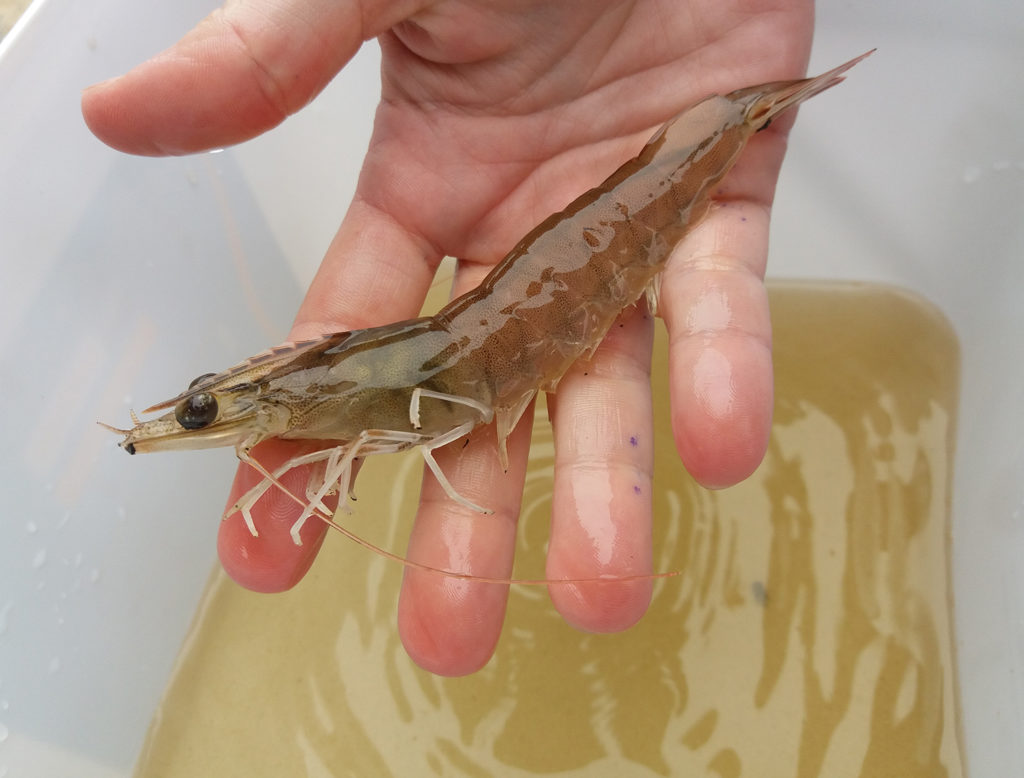
Aquafeeds
What is the best carbon-nitrogen ratio for biofloc systems?
A recent study at the Federal University of Rio Grande in Brazil showed that it is possible to reduce the C:N ratio in biofloc cultures, to decrease the water volume used and the total suspended solids produced, with resulting savings.
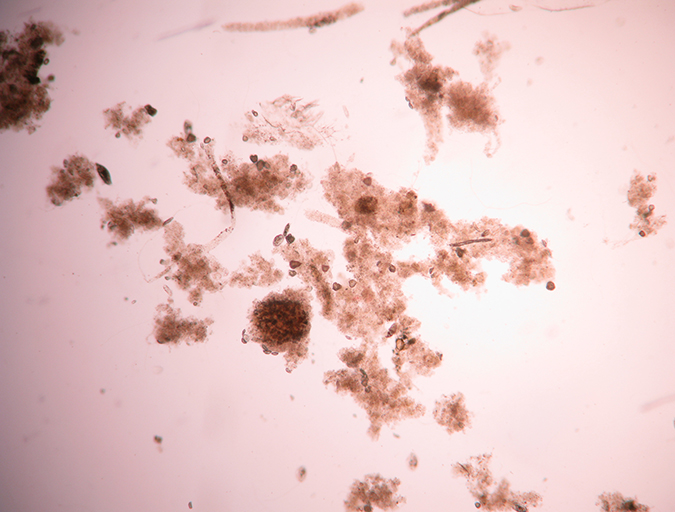
Health & Welfare
Testing an intensive shrimp hatchery system using biofloc technology
The use of biofloc technology (BFT) is increasing in the commercial production of several important aquatic species, as it can increase production and efficiency and minimize the potential impacts of effluents. This study showed that BFT systems without water exchange and supplemented with molasses or dextrose as a carbon source yield adequate production and water quality during the hatchery phase of L. vannamei.
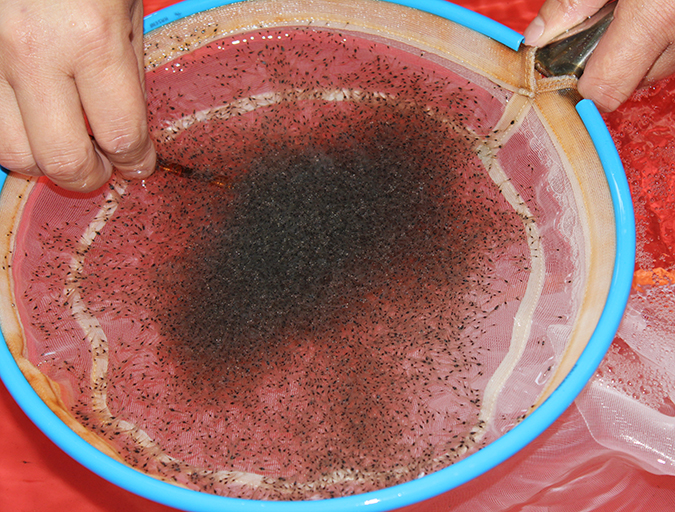
Health & Welfare
Acclimating shrimp postlarvae before pond stocking
Shrimp postlarvae acclimation before stocking into the various growout systems (ponds, raceways, tanks) is a critical – and often overlooked, sometimes taken for granted – step in the shrimp culture process. Various water quality parameters should be changed slowly so that the young shrimp have the time to gradually adapt to the new conditions.
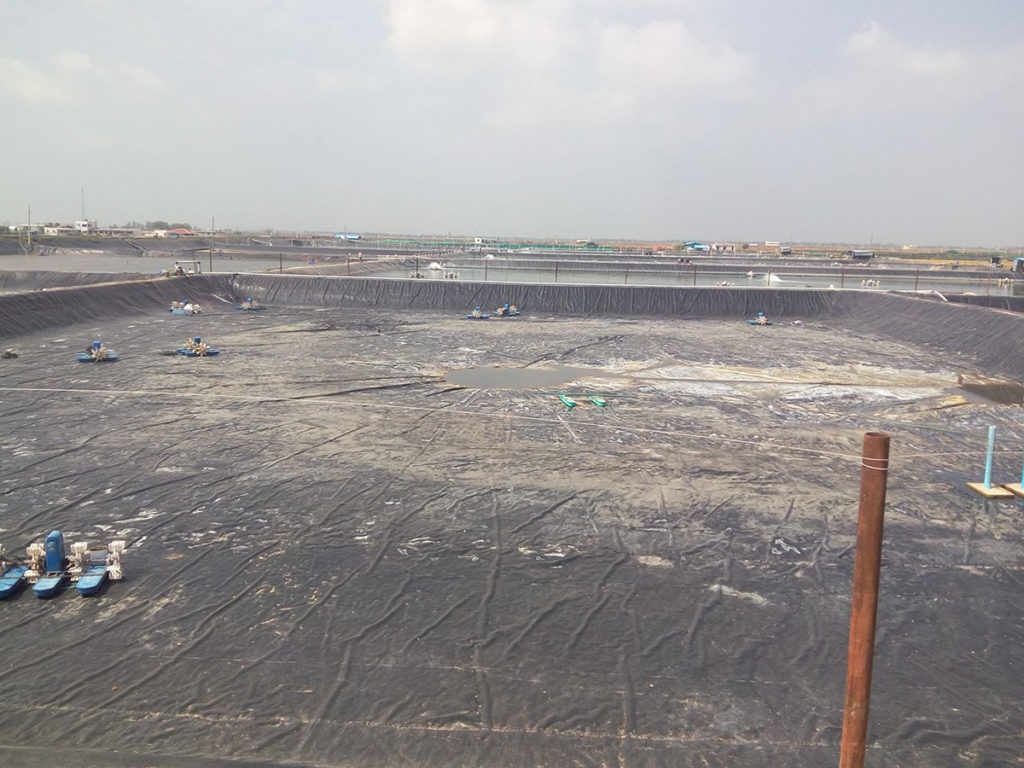
Responsibility
Appraising pond liners for shrimp culture
The use of plastic-lined ponds by shrimp farmers can significantly improve production efficiency, support more production cycles per year, and higher mechanical aeration rates and stocking densities. The capital cost of lining ponds can be very significant, so a thorough feasibility analysis is recommended when considering this production tool.

